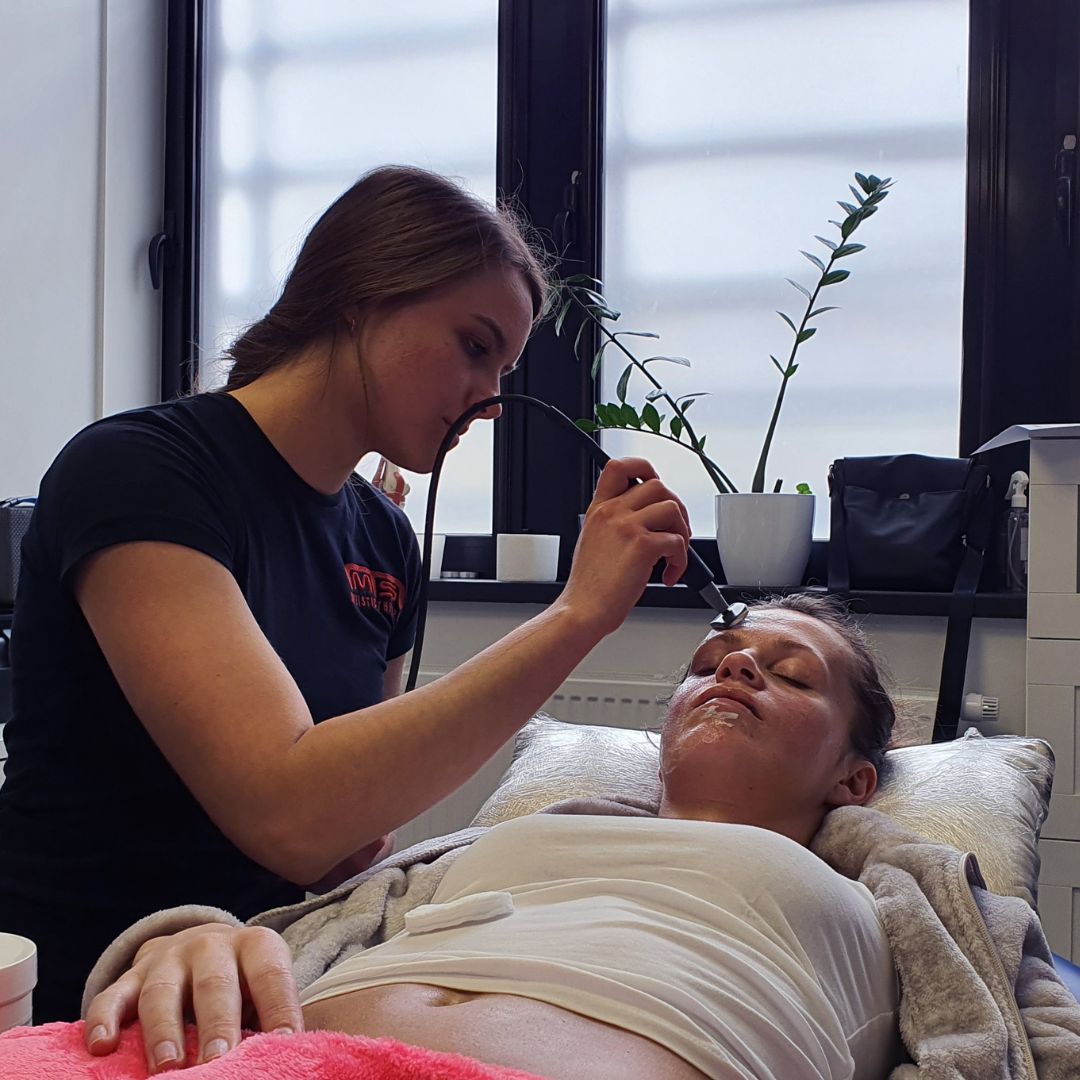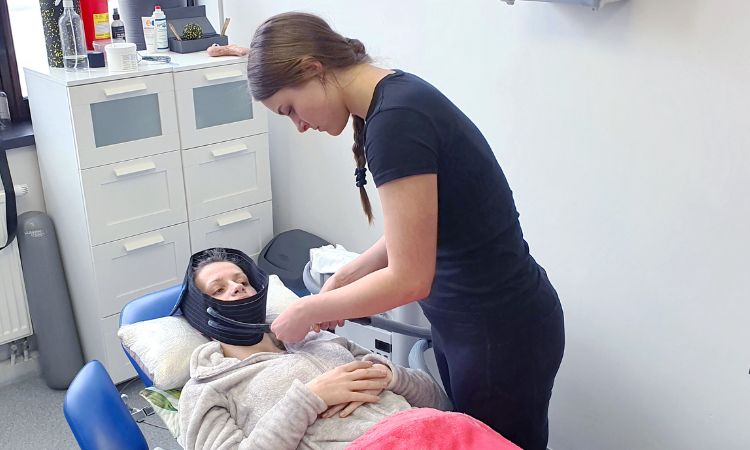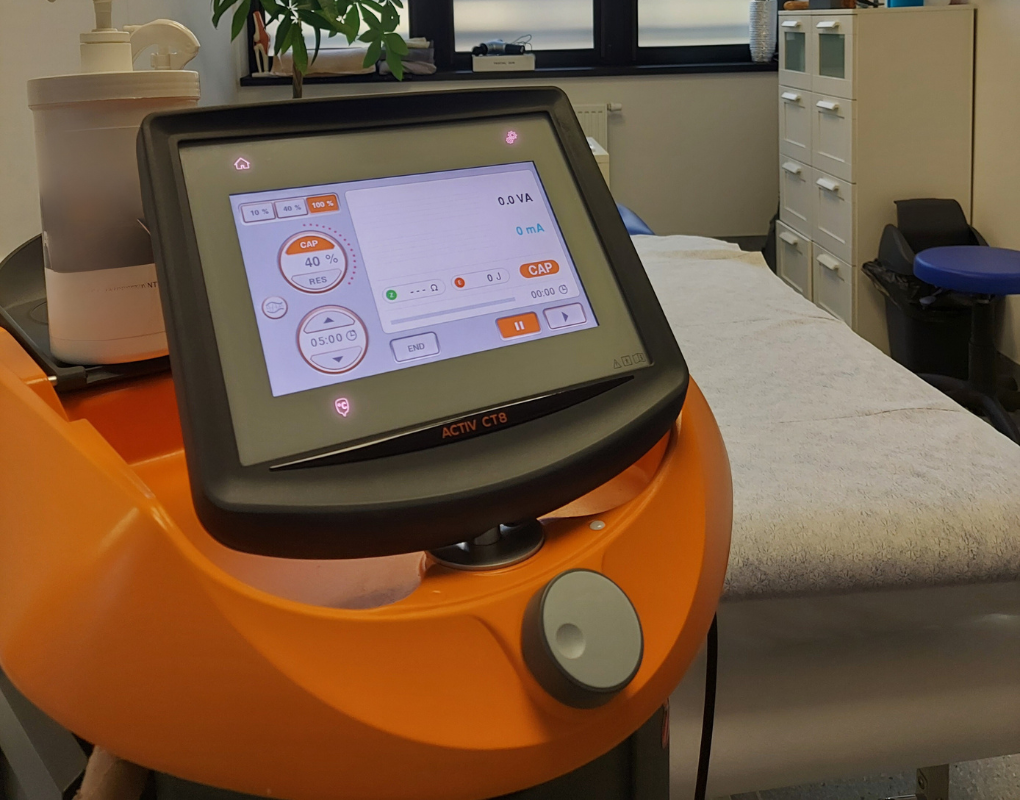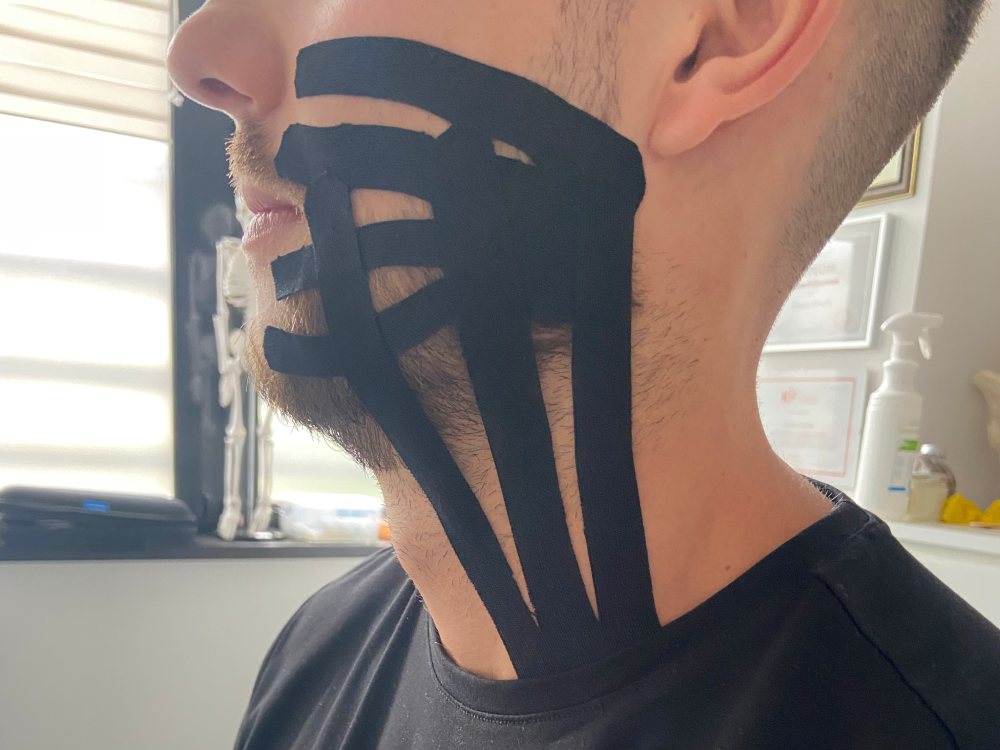
Correctly conducted therapeutic treatments in the field of dental physiotherapy have the ability to shorten the time of wearing orthodontic appliances. This is possible through proper preparation of the masticatory musculoskeletal system. When the muscles are relaxed, free movement of the bone tissue, i.e. the teeth, becomes possible. Correct physiotherapeutic preparation makes it possible to effectively introduce changes that will be sustained by the orthodontic appliance.
Physiotherapy in the field of dentistry plays an extremely important role. Its aim is to properly prepare the patient for orthodontic or prosthetic treatment, to reduce swelling after surgery and to reduce muscle tension in the masticatory organ. Physiotherapy is often used in the case of recurrent headaches and supports the treatment of bruxism, i.e. pathological abrasion of the teeth, and disorders of the temporomandibular joint. It is worth noting that the best results of dental physiotherapy can be achieved in cooperation with the dentist.
Often complaints of head and temple pain are caused by excessive tension in the chewing muscles. There are many factors that can contribute to this condition, such as grinding or clenching of teeth, malocclusion or poor posture. Proper diagnosis and the establishment of a personalised therapy plan often provide relief from headaches. It is an effective solution to manage headache complaints.
Tinnitus is the sensation of sounds in the form of squeaks and wheezes. When they are related to craniomandibular problems, they usually manifest themselves as a sensation of blocked ears, similar to that felt when flying in an aeroplane. They are often accompanied by dizziness and temporary loss of balance. In the case of tinnitus caused by craniomandibular dysfunctions, dental physiotherapy can effectively help by relieving masticatory muscle tension. Improving the condition of the masticatory organ can help to reduce tinnitus and other accompanying symptoms, such as a feeling of ear congestion or dizziness. Various methods and techniques are used, such as massage, muscle relaxation, therapeutic exercises or tissue stimulation. The aim of these treatments is to restore balance and normal function to the masticatory organ, which can bring relief and reduce the intensity of tinnitus.
In dental physiotherapy, there are many different manual techniques that affect the stomatognathic system. These methods and concepts are commonly used in physiotherapy practice.
Soft tissue mobilisations are a technique that involves the gentle manipulation and relaxation of the muscles and soft tissues around the masticatory organ. Compression mobilisations is a technique that involves applying controlled pressure to specific areas of the face and temporomandibular joint.
Joint mobilisation, on the other hand, is a technique that focuses on the manipulation of the temporomandibular joint. Through gentle movements, the physiotherapist can improve the mobility of the joint, reduce stiffness and alleviate the pain associated with its dysfunction.
Temporomandibular disorders affect approximately 3 to 12% of the population and are the most common cause of orofacial pain. Symptoms of these disorders are most common in women, who are affected 4 to 8 times more often than men. The predominant age group in which these symptoms occur is between 20 and 40 years of age.
The discomfort, in the form of jumping, popping or snapping of the jaw when moving the jaw, is due to dysfunction of the temporomandibular joints. This can vary from patient to patient. For some, the noises occur when yawning, for others when closing the mouth, there may be pain, as well as a feeling of locking of the temporomandibular joints, headaches, pain in the ear area. Possible causes of a leaping jaw include stress, habitual teeth grinding, jaw clenching, arthritis, trauma or malocclusion. Dental physiotherapy can be an effective treatment for leaping jaw, which is one of the temporomandibular disorders. Therapeutic techniques used include mobilisation of the temporomandibular joint, therapeutic exercises and patient education.
Bruxism, or habitual and unconscious teeth grinding and clenching, is a problem with psychosomatic causes. It is characterised by discomfort on palpation of the masticatory muscles and neck area. Bruxism can lead to teeth grinding, significant tooth sensitivity and jaw pain. Various methods are used to treat bruxism, including pharmacotherapy, dental physiotherapy and relaxation splints. Dental physiotherapy is based on techniques such as soft tissue mobilisations, manual therapy, relaxation exercises and stretching of the masticatory muscles. The aim of physiotherapy is to reduce muscle tension, improve muscle balance and reduce symptoms associated with bruxism.





